What a NJ Roofing Company Can Teach Virginia Homeowners About Roof Maintenance
New Jersey roofing companies have developed exceptional roof maintenance expertise through necessity—their harsh winters, heavy snow loads, and severe nor'easters demand rigorous preventive care that separates surviving roofs from failing ones. While Virginia's moderate climate appears less demanding, adopting maintenance lessons from NJ roofing company practices delivers significant benefits for Northern Virginia homeowners. The proactive, thorough approaches New Jersey contractors employ to extend roof life in challenging conditions translate remarkably well to Virginia's variable weather, helping homeowners avoid expensive repairs, extend roof lifespan, and maintain home value through consistent, climate-appropriate care regardless of seasonal extremes.
The New Jersey Roof Maintenance Philosophy
NJ roofing company maintenance philosophy centers on aggressive prevention rather than reactive repairs. New Jersey's brutal winters punish neglected roofs mercilessly—minor issues ignored in fall become catastrophic failures by spring. This harsh reality creates maintenance cultures prioritizing thorough fall preparation, vigilant winter monitoring, and comprehensive spring damage assessment. New Jersey contractors learned decades ago that preventive maintenance costs fraction what emergency repairs demand, especially when winter weather makes repairs difficult, dangerous, and expensive.
This preventive mindset translates excellently to Virginia conditions despite our milder climate. Virginia homeowners often delay maintenance assuming moderate weather reduces urgency. However, our freeze-thaw cycles, severe thunderstorms, and occasional extreme winters damage roofs just as effectively as New Jersey's consistent harsh conditions—just through different mechanisms. Adopting New Jersey's proactive maintenance approach protects Virginia roofs from accumulated damage that gradually undermines integrity until major problems develop. Whether maintaining recently replaced roofs or extending aging system life, preventive care proves universally valuable.
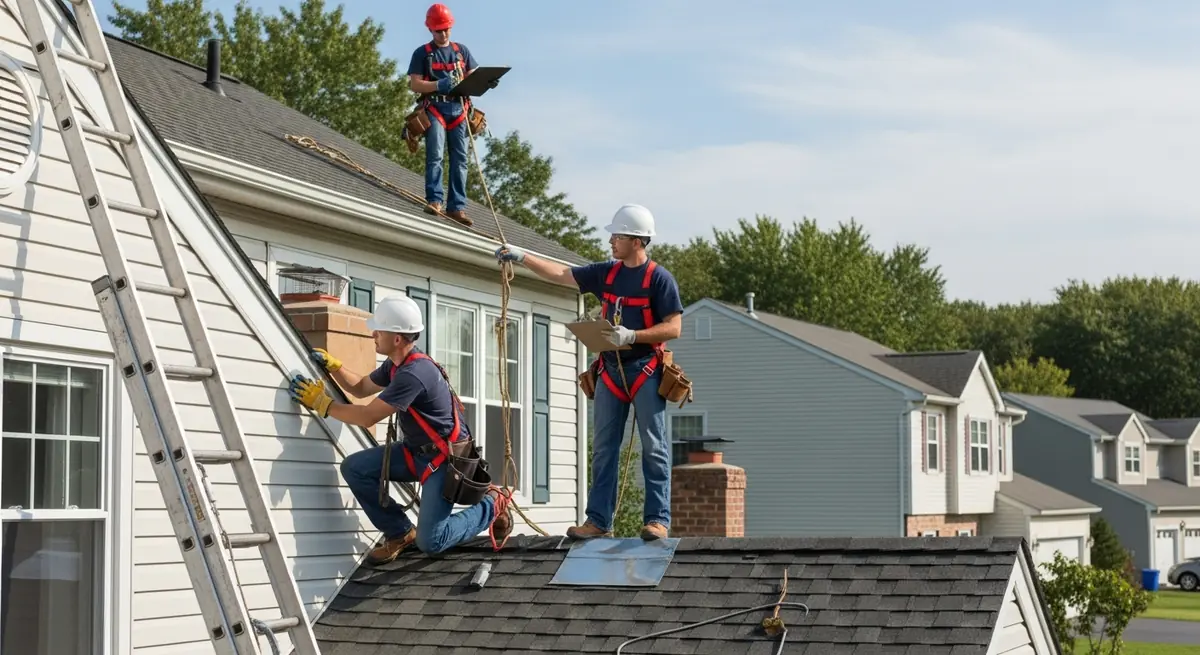
Seasonal Inspection Protocols
NJ roofing companies conduct mandatory seasonal inspections addressing specific threats each season presents. Fall inspections before first freeze verify roof readiness for winter stress. Contractors check sealant integrity around penetrations, evaluate flashing condition, ensure proper drainage, and verify shingle attachment quality. They clear gutters and downspouts, trim overhanging branches, and address minor issues before freezing temperatures make repairs difficult. This thorough pre-winter preparation prevents most cold-weather problems.
Spring inspections following winter assess damage from ice, snow, and freeze-thaw cycles. New Jersey contractors look for lifted shingles from ice dams, check for moisture infiltration signs in attics, evaluate flashing for winter damage, and identify sealant failures from temperature cycling. Summer and fall inspections maintain vigilance against storm damage and progressive wear. Virginia homeowners benefit from adopting these seasonal protocols even though specific threats differ. Our inspection timing should address Virginia-specific challenges—post-winter freeze-thaw damage, summer storm impacts, and fall preparation for variable winter conditions. Regular seasonal inspections catch problems early when repairs cost hundreds rather than thousands.
Gutter and Drainage System Maintenance
New Jersey's heavy snowfall and ice accumulation make effective drainage absolutely critical. NJ roofing companies treat gutter cleaning as essential maintenance, not optional service. Clogged gutters create ice dams, overflow problems, and moisture damage that destroy roofs and foundations. New Jersey contractors recommend gutter cleaning minimum twice annually—late fall after leaf drop and mid-spring after winter debris accumulation. Many recommend quarterly cleaning for homes with significant tree coverage.
Virginia's extensive tree coverage creates similar gutter challenges despite less snow. Our autumn leaf accumulation rivals New Jersey's, while summer storms deposit debris continuously. Spring pollen and seed pods add seasonal complications. Adopting New Jersey's rigorous gutter maintenance standards prevents the water damage that gutters should prevent. Properly maintained gutters direct water away from foundations, prevent ice dam formation during cold snaps, and protect fascia boards and soffits from moisture damage. These gutter practices complement proper gutter repair and cleaning when problems develop.

Ice Dam Prevention Strategies
Ice dams represent NJ roofing companies' primary winter maintenance focus. New Jersey contractors employ multi-layered prevention strategies starting with proper attic insulation maintaining consistent roof deck temperatures. They ensure adequate ventilation prevents heat accumulation melting snow from below. Strategic ice and water shield installation protects vulnerable areas when prevention fails. Some New Jersey installations include heated cable systems along eaves providing active ice prevention during severe weather.
Virginia experiences ice dams less frequently, leading many homeowners to ignore prevention. However, our periodic severe winters create ice dam conditions that catch unprepared roofs vulnerable to thousands in water damage. Adopting New Jersey prevention strategies—proper insulation, effective ventilation, and ice and water shield coverage—provides insurance against these periodic severe conditions. The modest investment prevents expensive damage during inevitable harsh winters testing Virginia roofs beyond normal expectations. These preventive measures work alongside proper emergency repair protocols when problems develop.
Attic Ventilation Monitoring
NJ roofing companies emphasize attic ventilation as critical maintenance component often overlooked by homeowners. Proper ventilation prevents moisture accumulation causing mold, wood rot, and insulation degradation. New Jersey contractors check that soffit vents remain clear of insulation blocking airflow, ensure ridge vents function properly, and verify baffles maintain air channels. They look for condensation signs on roof decking indicating ventilation inadequacy or insulation problems creating temperature differentials.
Virginia attics face different but equally important ventilation challenges. Summer heat builds attics to 150°F, cooking shingles from below and drastically reducing lifespan. Winter moisture from living spaces condenses on cold surfaces when ventilation proves inadequate. New Jersey's ventilation monitoring practices apply excellently to Virginia conditions—we simply address different seasonal priorities. Proper ventilation extends shingle life, improves energy efficiency, and prevents moisture damage regardless of climate. Regular ventilation checks should be standard Virginia maintenance practice learned from New Jersey expertise. Proper ventilation supports other roof lifespan extension strategies homeowners should employ.
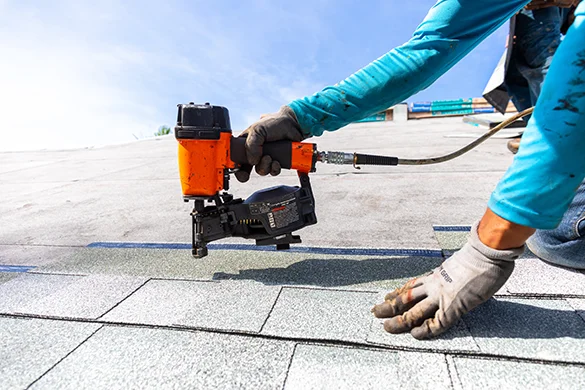
Flashing Inspection and Maintenance
Flashing failures cause most roof leaks, yet homeowners rarely inspect these critical components until problems develop. NJ roofing companies make flashing inspection standard procedure during every roof evaluation. They check chimney flashing for separation, sealant degradation, and metal deterioration. Valley flashing receives careful attention since ice and debris accumulation stress these areas heavily. Penetration flashing around vents, skylights, and exhaust fans gets inspected for proper sealing and secure attachment.
Virginia roofs experience similar flashing vulnerabilities despite different climate stresses. Freeze-thaw cycles crack sealants, UV exposure degrades materials, and thermal cycling loosens fasteners. New Jersey's thorough flashing inspection protocols catch these problems before water infiltration damages roof decking and interior structures. Virginia homeowners should adopt annual flashing inspections as standard practice, paying particular attention after severe weather events when wind and impact damage commonly affects these vulnerable areas. Professional flashing inspection and maintenance prevents most leak problems while costing far less than repairs from water damage.
Shingle Condition Assessment
New Jersey's harsh conditions accelerate shingle aging, making NJ roofing companies expert at assessing remaining shingle life and identifying replacement timing. They look for granule loss indicating advanced wear, check shingle flexibility for brittleness from age, inspect for curling edges suggesting moisture problems or ventilation inadequacy, and evaluate color consistency identifying UV degradation. This comprehensive assessment determines whether roofs need replacement or repairs address problems adequately.
Virginia's moderate climate allows longer shingle lifespans, but the same assessment techniques identify when replacement makes better sense than continued repairs. New Jersey contractors' expertise differentiating between roofs with years of life remaining versus those requiring replacement helps Virginia homeowners make informed decisions. Many Virginia roofs receive unnecessary replacements because homeowners can't assess true condition, while others limp along needing replacement but patched repeatedly. Adopting New Jersey's professional assessment standards ensures appropriate decisions about timing repairs versus replacements for maximum value and protection.

Documentation and Record Keeping
Professional NJ roofing companies maintain detailed service records documenting every inspection, repair, and maintenance activity. These records track roof condition over time, identify recurring problems suggesting systemic issues, support warranty claims, and provide maintenance history valuable for home sales. New Jersey contractors photograph conditions during inspections, creating visual documentation showing progression of problems or verification that issues were addressed properly.
Virginia homeowners should adopt this documentation discipline. Simple maintenance logs recording inspection dates, findings, repairs performed, and contractor information prove invaluable when problems develop or during home sales. Photos showing roof condition at various times help contractors assess changes indicating problems. Documentation supports insurance claims by proving maintenance history and damage timing. This seemingly minor practice—borrowed from New Jersey professionals' systematic approach—provides significant benefits over roof lifespan while requiring minimal effort.
Tree Management and Debris Control
New Jersey's extensive tree coverage teaches NJ roofing companies that tree management represents critical roof maintenance. Overhanging branches drop leaves, seeds, and twigs that clog gutters and retain moisture on roof surfaces. Branches touching roofs during wind events abrade shingles and damage flashing. Trees too close to homes shade roofs, promoting algae and moss growth while preventing proper drying after rain events. New Jersey contractors recommend maintaining 6-10 foot clearance between branches and roofs, regular trimming preventing overhang, and removing trees threatening homes during storms.
Virginia's even more extensive tree coverage makes these practices equally important. Our humid climate combines with shade creating ideal conditions for algae and moss reducing shingle life significantly. Storm damage from falling branches affects Virginia roofs regularly during severe weather. Adopting New Jersey tree management standards—regular trimming, appropriate clearances, and proactive removal of hazardous trees—protects roofs while reducing gutter cleaning frequency. This vegetation management complements professional roofing maintenance creating comprehensive protection strategies.
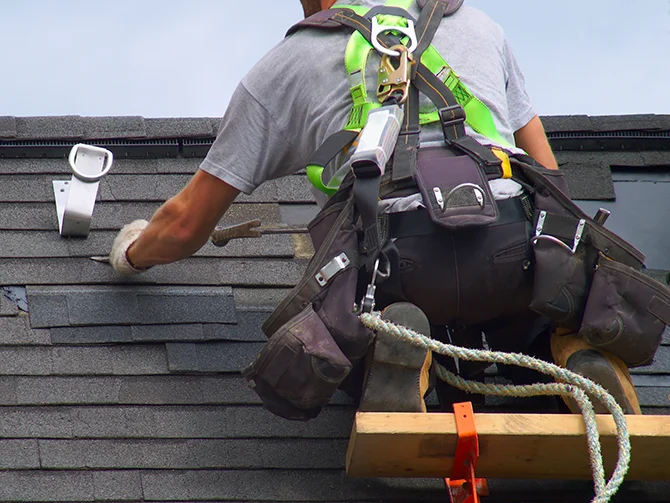
Winter Maintenance Practices
NJ roofing companies developed extensive winter maintenance expertise through decades battling harsh conditions. They monitor roofs after heavy snowfall for dangerous accumulations requiring removal. They watch for ice dam formation, addressing problems immediately before water infiltrates homes. New Jersey contractors check that ventilation systems remain unobstructed by snow or ice. They inspect for damage after major storms when wind-blown ice causes impact damage. This vigilant winter monitoring prevents most cold-weather problems while identifying issues requiring immediate attention.
Virginia's milder winters tempt homeowners to ignore winter roof monitoring. However, our periodic severe weather creates conditions demanding attention. Ice storms coat roofs with heavy ice loads stressing structures. Occasional heavy snowfalls combine with architectural features creating dangerous accumulations. Freeze-thaw cycles work water under shingles, causing damage invisible until leaks develop. Adopting New Jersey's winter vigilance—even if less frequently needed—protects Virginia roofs during the severe events that inevitably occur. Simple post-storm visual inspections identify obvious problems before they worsen.
Preventive Repairs vs. Emergency Response
New Jersey's harsh climate taught contractors that preventive repairs cost fraction of emergency responses. Addressing minor sealant failures, replacing few damaged shingles, or reattaching loose flashing during routine maintenance prevents water infiltration causing thousands in damage. Emergency winter repairs during storms cost premium rates while providing inferior results due to challenging conditions. This economic reality drives New Jersey's emphasis on comprehensive preventive maintenance catching problems early.
The same economics apply in Virginia despite our moderate climate. Small repairs during pleasant weather cost $200-500 while preventing interior damage repairs costing $2,000-10,000. Emergency repairs during storms carry premium pricing while weather conditions compromise quality. Virginia homeowners adopting New Jersey's preventive philosophy—addressing minor issues immediately rather than waiting—save money while maintaining better roof protection. This approach requires discipline ignoring short-term savings from delaying repairs in favor of long-term economics favoring prevention. Regular maintenance inspections by professionals like those offering free estimates identify issues warranting preventive attention.
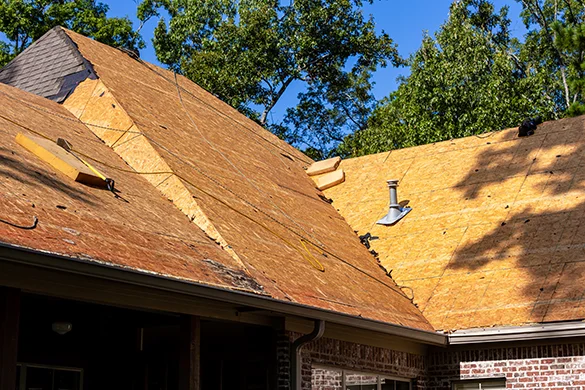
Material-Specific Maintenance Requirements
NJ roofing companies recognize that different roofing materials demand distinct maintenance approaches. Asphalt shingles require monitoring for granule loss and sealant failure. Metal roofing needs fastener inspection and coating maintenance. Flat roofs demand membrane inspection and drainage verification. Tile and slate require individual unit inspection and underlying waterproofing assessment. New Jersey contractors tailor maintenance protocols to specific materials rather than applying generic approaches.
Virginia homeowners should similarly match maintenance to material type. Metal roofing systems benefit from different care than asphalt shingles. Flat commercial roofs require specialized attention. EPDM, TPO, and PVC membrane roofs each demand specific maintenance protocols. Understanding material-specific requirements—knowledge New Jersey contractors developed through experience—ensures appropriate care maximizing each material's potential lifespan while avoiding inappropriate maintenance that wastes effort without benefit.
Professional vs. DIY Maintenance
New Jersey's challenging conditions teach clear lessons about professional versus DIY maintenance capabilities. Homeowners can safely clear gutters, remove debris, and perform ground-level visual inspections. However, detailed roof inspections require walking on roofs—dangerous for untrained homeowners especially on steep pitches common in New Jersey. Professional contractors identify subtle problems homeowners miss—early flashing failures, minor sealant degradation, or ventilation inadequacies requiring expertise to recognize.
Virginia's similar architectural styles and liability concerns create identical professional-versus-DIY boundaries. Homeowners should handle ground-level tasks like gutter cleaning and debris removal. Professional contractors should perform roof inspections, flashing repairs, and technical assessments requiring expertise and safety equipment. This division maximizes safety while ensuring problems get identified by trained eyes. Trying to save money through DIY roof inspections often misses problems until they become expensive emergencies. The modest cost of professional inspections—often included with maintenance services—provides excellent value through early problem identification. Consider the differences outlined in specialist versus DIY approaches when planning maintenance.

Warranty Maintenance Requirements
Many roofing warranties—especially extended manufacturer warranties—require documented regular maintenance. NJ roofing companies emphasize this requirement because New Jersey homeowners increasingly carry premium warranties requiring annual inspections and maintenance records. Failing to maintain documented maintenance history voids warranties, leaving homeowners without coverage when problems develop. New Jersey contractors provide maintenance documentation satisfying warranty requirements while catching problems early.
Virginia homeowners should similarly understand their warranty maintenance obligations. Premium warranties offering 30-50 year coverage often mandate professional inspections every 2-3 years. Documentation requirements vary, but maintaining inspection records, repair receipts, and maintenance logs protects warranty coverage. Investing in required maintenance preserves warranty validity while providing the preventive care that extends roof life regardless of warranty coverage. This disciplined approach—standard practice for New Jersey roofing companies—should be equally standard for Virginia homeowners carrying premium warranties.
Storm Damage Assessment
New Jersey experiences severe nor'easters and occasional hurricanes requiring immediate post-storm roof assessments. NJ roofing companies developed systematic storm damage evaluation protocols identifying problems requiring immediate attention versus those manageable through regular maintenance. They check for lifted or missing shingles, inspect flashing displacement, evaluate impact damage from debris, and assess structural concerns from extreme loads. Quick assessment allows prioritizing urgent repairs while documenting damage for insurance claims.
Virginia faces similar severe weather requiring prompt post-storm evaluation. Our severe thunderstorms, occasional tornadoes, and periodic hurricane impacts demand immediate assessment identifying problems before minor damage becomes major. Adopting New Jersey's systematic post-storm protocols—visual inspection followed by professional evaluation when damage appears likely—prevents overlooking problems that worsen rapidly. Understanding what constitutes storm damage versus wear helps homeowners make appropriate insurance claims. These practices align with knowing warning signs requiring immediate attention before problems worsen.
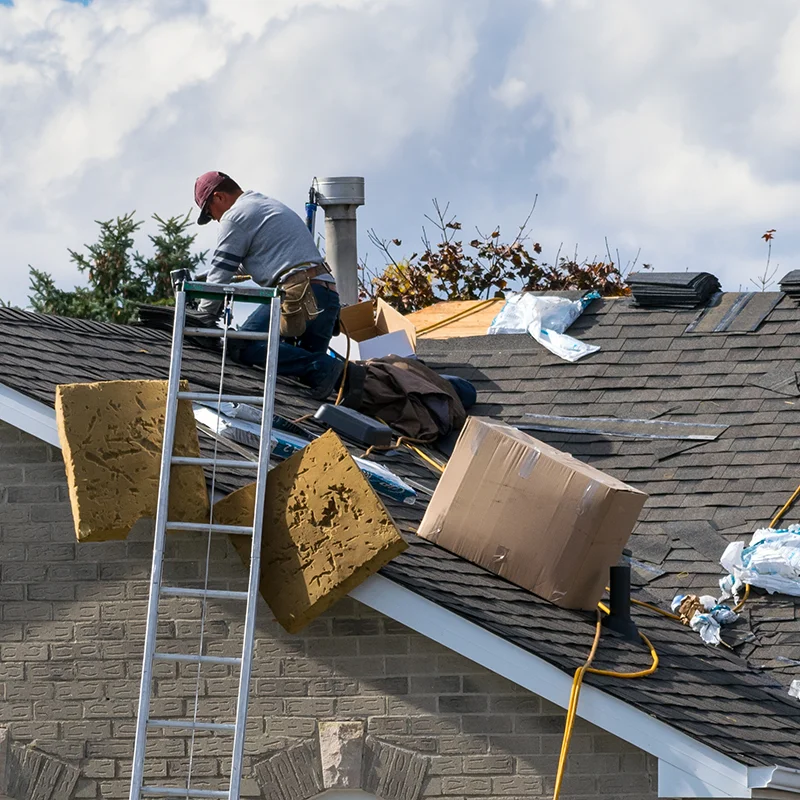
Long-Term Maintenance Planning
Professional NJ roofing companies help homeowners develop long-term maintenance plans anticipating future needs. These plans identify when components like gutters, flashing, or ventilation systems will require upgrades independent of roof replacement. They estimate remaining roof life helping homeowners budget for eventual replacement. Long-term planning prevents surprise emergency replacements while allowing homeowners to optimize timing around other home projects or financial considerations.
Virginia homeowners benefit from similar forward planning. Understanding that roofs approaching 15-20 years will need replacement within 5-10 years allows budgeting and timing decisions. Planning gutter replacement when scaffolding is already erected for roof work saves money. Coordinating roofing with siding replacement or other exterior work improves efficiency. New Jersey contractors' systematic planning approach—adapted to Virginia's moderate climate extending roof life—helps homeowners make informed decisions maximizing value while avoiding panic decisions during emergencies.
Cost-Benefit Analysis of Maintenance Programs
NJ roofing companies offer comprehensive maintenance programs providing regular inspections, priority service, and preventive care for annual fees. These programs typically cost $200-400 annually but save thousands through early problem identification, priority emergency service, and discounted repairs. New Jersey homeowners increasingly recognize that maintenance program costs represent insurance against expensive surprises while extending roof life through consistent professional attention.
Virginia homeowners should evaluate similar programs from local contractors. Annual maintenance contracts providing two inspections, gutter cleaning, minor repairs, and priority storm response deliver excellent value. The peace of mind knowing professionals monitor roof condition regularly—combined with documented maintenance supporting warranty claims—justifies modest annual costs. Even without formal programs, budgeting for annual professional inspections and immediate minor repair attention provides the preventive approach New Jersey's harsh climate necessitates but Virginia's moderate weather makes optional yet valuable.
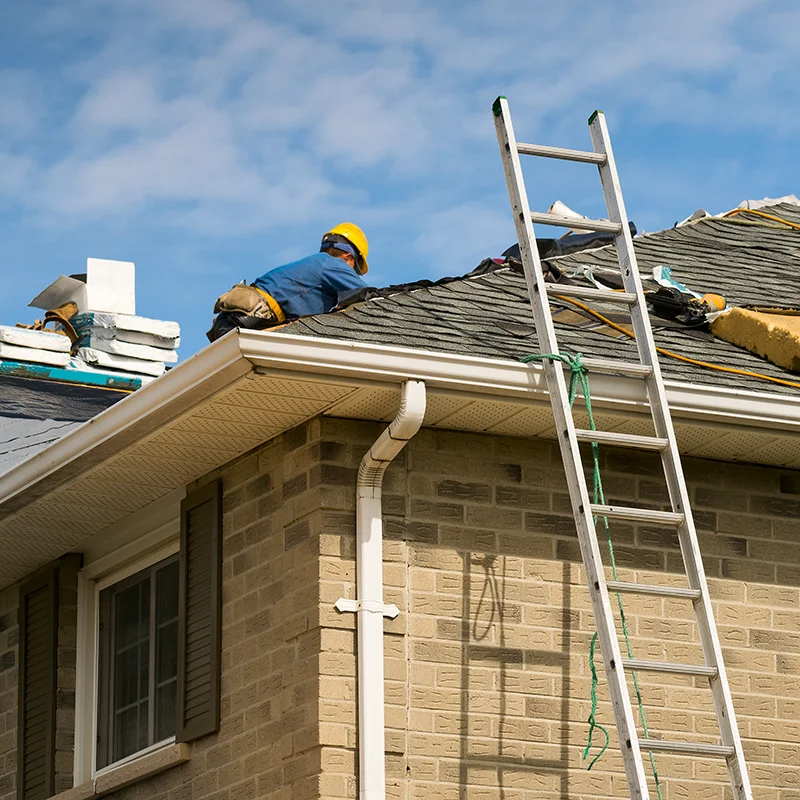
Implementing New Jersey Lessons in Virginia
Adapting NJ roofing company maintenance wisdom to Virginia conditions requires understanding what practices transfer directly versus those needing modification. New Jersey's rigorous inspection schedules, thorough preventive repairs, and systematic documentation apply universally regardless of climate. Their ice dam prevention measures adapt well to Virginia's occasional severe winters even if not needed annually. Gutter maintenance, tree management, and flashing attention prove equally important in both regions despite different specific threats.
Virginia homeowners should adopt the preventive philosophy without necessarily matching New Jersey's intensity. Seasonal inspections make sense in both regions, though Virginia timing addresses different threats. Professional annual inspections provide value everywhere, catching problems early regardless of climate severity. The fundamental lesson from NJ roofing companies—that preventive maintenance costs far less than reactive repairs while delivering superior protection—applies universally. Virginia's moderate climate tempts complacency, but adopting New Jersey's proactive approach protects homes better while costing less over time.
Partner with Reston Roof for Expert Maintenance
At Reston Roof, we combine Northern Virginia experience with maintenance best practices learned from harsh-climate regions including New Jersey. Our comprehensive maintenance programs provide the preventive care that extends roof life, prevents expensive emergencies, and maintains your home's value. We understand what Virginia roofs need while incorporating proven practices from contractors battling challenging conditions requiring superior maintenance expertise.
Our maintenance services include thorough seasonal inspections, preventive repairs, gutter cleaning, documentation supporting warranties, and priority storm response. Whether you need one-time inspections, annual maintenance contracts, or guidance developing long-term roof care plans, we deliver expertise protecting your investment. Serving Reston, Herndon, Oakton, Sterling, and throughout Northern Virginia, we bring professional maintenance that learns from the best practices nationwide while optimizing for local conditions. Contact us at (571) 453-6515 to discuss maintenance programs protecting your roof for decades.
